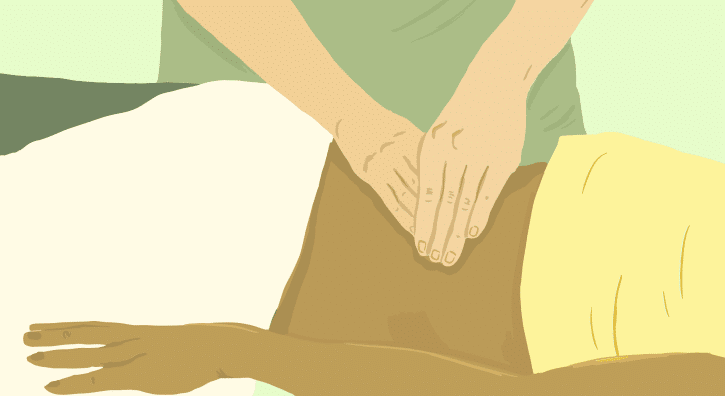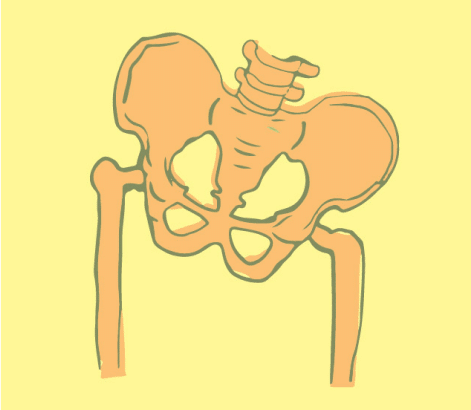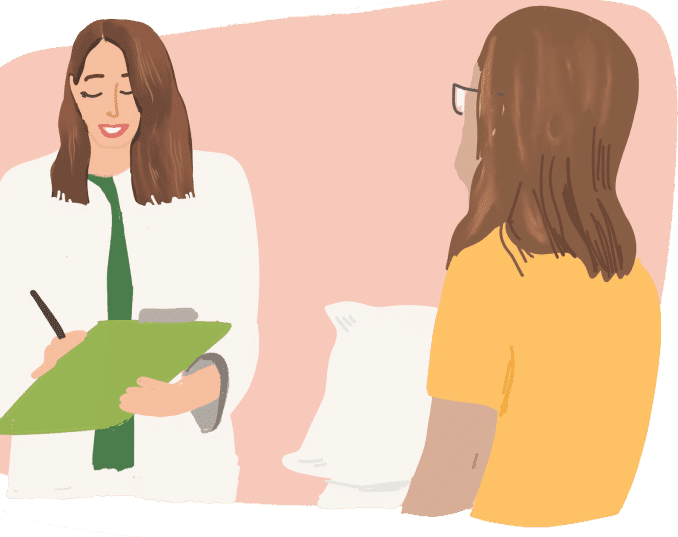

Symptoms
- Burning, stinging, aching, or itching sensations in the vulva, vagina, perineum, or anus are common indicators of pelvic pain
- Women experiencing pelvic pain often note difficulty during intimacy, pain from tight garments, or discomfort while sitting
- Even light or moderate exercise may trigger symptom flare-ups
- Urinary disturbances such as increased frequency, urgency, discomfort, or leakage can accompany pelvic pain
- Gastrointestinal concerns—like constipation or bloating—may appear alongside pelvic discomfort
- Symptoms might stem from direct triggers such as penetration or could occur spontaneously
- These symptoms can be episodic or linger consistently over time

Symptoms
- Burning, stinging, aching, or itching sensations in the vulva, vagina, perineum, or anus are common indicators of pelvic pain
- Women experiencing pelvic pain often note difficulty during intimacy, pain from tight garments, or discomfort while sitting
- Even light or moderate exercise may trigger symptom flare-ups
- Urinary disturbances such as increased frequency, urgency, discomfort, or leakage can accompany pelvic pain
- Gastrointestinal concerns—like constipation or bloating—may appear alongside pelvic discomfort
- Symptoms might stem from direct triggers such as penetration or could occur spontaneously
- These symptoms can be episodic or linger consistently over time

Associated Diagnoses
Diagnoses such as Endometriosis, Vulvodynia, Interstitial Cystitis/Painful Bladder Syndrome, Pudendal Neuralgia, Lichen Sclerosus, Lichen Planus, and Irritable Bowel Syndrome are associated with pelvic pain and pelvic floor dysfunction.


Causes of Pelvic Pain
- Repetitive vaginal and/or bladder infections and/or gynecologic, urologic, dermatologic or gastrointestinal conditions
- The majority of women with pelvic pain have pelvic floor dysfunction
- Prescription medications such as oral contraceptives, acne medications, and hormonal suppressive therapies for diseases such as Endometriosis and Polycystic Ovarian Syndrome (PCOS)
- Surgical trauma (childbirth, pelvic organ prolapse repair, hysterectomy)
- Orthopedic injuries or traumas
- Biomechanical or structural dysfunction (hip dysfunction, sacro-iliac joint dysfunction, piriformis syndrome, scoliosis, leg length discrepancy)
- Vaginal childbirth
- Menopause
- Genital cutting or genital mutilation
Symptoms
- Repetitive vaginal and/or bladder infections and/or gynecologic, urologic, dermatologic or gastrointestinal conditions
- The majority of women with pelvic pain have pelvic floor dysfunction
- Prescription medications such as oral contraceptives, acne medications, and hormonal suppressive therapies for diseases such as Endometriosis and Polycystic Ovarian Syndrome (PCOS)
- Surgical trauma (childbirth, pelvic organ prolapse repair, hysterectomy)
- Orthopedic injuries or traumas
- Biomechanical or structural dysfunction (hip dysfunction, sacro-iliac joint dysfunction, piriformis syndrome, scoliosis, leg length discrepancy)
- Vaginal childbirth
- Menopause
- Genital cutting or genital mutilation

Diagnostic Challenges
Research shows that it can take up to five years for women with pelvic pain to get a proper diagnosis and up to 11 years for a woman with Endometriosis. This is because the symptoms of pelvic pain can mimic conditions such as urinary tract, yeast, bladder and sexually transmitted infections. When the pelvic floor is the culprit, the diagnostic tests for these infections are negative, leading to confusion for both the medical provider and the patient. Many medical providers are not aware that pelvic floor dysfunction can cause pelvic pain and it certainly does not occur to women to go to physical and occupational therapy when these symptoms arise. The majority of our patients tell us they did not know they even had a pelvic floor until things started to go wrong!
Diagnostic Challenges
Research shows that it can take up to five years for women with pelvic pain to get a proper diagnosis and up to 11 years for a woman with Endometriosis. This is because the symptoms of pelvic pain can mimic conditions such as urinary tract, yeast, bladder and sexually transmitted infections. When the pelvic floor is the culprit, the diagnostic tests for these infections are negative, leading to confusion for both the medical provider and the patient. Many medical providers are not aware that pelvic floor dysfunction can cause pelvic pain and it certainly does not occur to women to go to physical and occupational therapy when these symptoms arise. The majority of our patients tell us they did not know they even had a pelvic floor until things started to go wrong!
Treatment:
How We Can Help You

Women in Poway suffering from pelvic pain go through years of unnecessary stress before discovering the actual root cause. Research shows that an accurate diagnosis can take up to five years—longer if Endometriosis is involved. This delay is due to how pelvic floor dysfunction can present as symptoms similar to common infections, causing misdiagnosis after misdiagnosis. With repeated negative lab results, confusion reigns for both doctors and patients. It’s not unusual for us to hear that our patients had never even heard of the pelvic floor before starting therapy—highlighting just how overlooked this essential part of the body is in women’s health.

Treatment:
How We Can Help You
Women in Poway suffering from pelvic pain go through years of unnecessary stress before discovering the actual root cause. Research shows that an accurate diagnosis can take up to five years—longer if Endometriosis is involved. This delay is due to how pelvic floor dysfunction can present as symptoms similar to common infections, causing misdiagnosis after misdiagnosis. With repeated negative lab results, confusion reigns for both doctors and patients. It’s not unusual for us to hear that our patients had never even heard of the pelvic floor before starting therapy—highlighting just how overlooked this essential part of the body is in women’s health.
How Can We Help You?
Have a question or something you’d like to share? Use the form below and don’t forget to enter your email address so we can follow up. Your information will be handled with complete confidentiality.

Join The Newsletter. Win a copy of our book, “Pelvic Pain Explained!”
We love getting to know our website visitors. Please tell us a little bit about yourself and get the latest info via PHRC e-newsletter!
*Subscribers automatically eligible to win our book, “Pelvic Pain Explained.”


